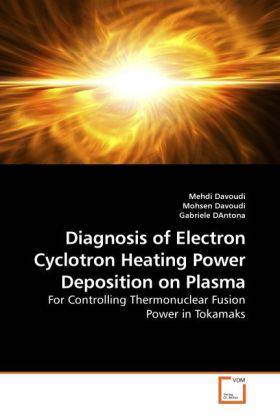
- Afhalen na 1 uur in een winkel met voorraad
- Gratis thuislevering in België vanaf € 30
- Ruim aanbod met 7 miljoen producten
- Afhalen na 1 uur in een winkel met voorraad
- Gratis thuislevering in België vanaf € 30
- Ruim aanbod met 7 miljoen producten
Zoeken
Diagnosis of Electron Cyclotron Heating Power Deposition on Plasma
For Controlling Thermonuclear Fusion Power in Tokamaks
Mehdi Davoudi, Mohsen Davoudi, Gabriele D'Antona
Paperback | Engels
€ 65,45
+ 130 punten
Omschrijving
A tokamak is a machine in which the toroidal and poloidal magnetic fields are produced to confine the plasma. It is designed for achieving the controlled thermonuclear fusion power. In the process of fusion, some layers of heated plasma become cooler than the other layers, which are called "Magnetic Islands". Magnetic Islands are an important limitation in the performance of tokamaks. Localized heating by Electron Cyclotron Heating (ECH) systems is a promising tool to eliminate the Magnetic Islands and control the plasma. In this book a detection algorithm which has been developed by Prof. Gabriele D'Antona is introduced and implemented on a set of off-line data. Detection and estimation methods are used to simulate the algorithm for determining the ECH power deposition radius in the plasma by processing the signals obtained from Electron Cyclotron Emission (ECE) sensors and the prior information. It has been found that the presented algorithm has successfully determined the deposition radius and it is very applicable in tokamaks. The simulations developed in MATLAB Simulink® and also show that the algorithm is pretty well consistent with respect to the noise.
Specificaties
Betrokkenen
- Auteur(s):
- Uitgeverij:
Inhoud
- Aantal bladzijden:
- 68
- Taal:
- Engels
Eigenschappen
- Productcode (EAN):
- 9783639249873
- Verschijningsdatum:
- 7/04/2010
- Uitvoering:
- Paperback
- Afmetingen:
- 152 mm x 229 mm
- Gewicht:
- 113 g

Alleen bij Standaard Boekhandel
+ 130 punten op je klantenkaart van Standaard Boekhandel
Beoordelingen
We publiceren alleen reviews die voldoen aan de voorwaarden voor reviews. Bekijk onze voorwaarden voor reviews.








